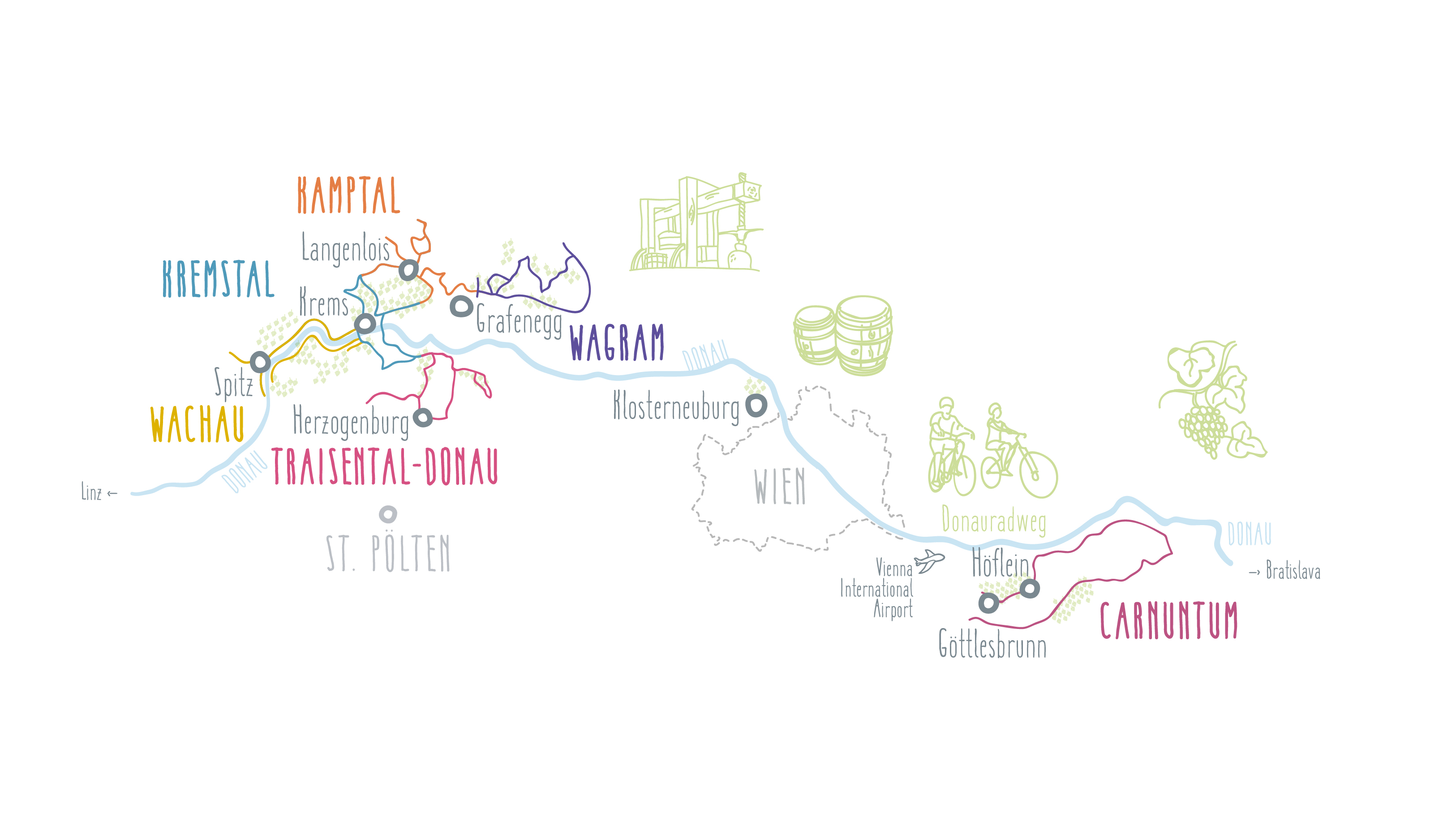

By clicking one of the following links a connection to an external service is going to be established.
Please select your language of choice
Choose region
The Danube in Lower Austria Wachau-Nibelungengau-Kremstal Kamptal-Wagram Tullner Donauraum Wagram Römerland Carnuntum-MarchfeldViticulture has a two-thousand year (cultural) history along the Danube. The Celts and Illyrians are believed to have pressed wine from wild grapes long before then, but systematic cultivation began at the time of the Roman occupation. The Bavarian dioceses and monasteries built the first terraced vineyards in the Wachau in the Middle Ages. Viticulture reached a heyday at the time, with large parts of today's Vienna planted in grapevines and the monasteries exporting their already in-depth knowledge of wine into the Danube region - a development that has left visible and delectable traces down to the present day.
Experiencing Wine
Along the Danube, you can immerse yourself deeply in wine history, say, by visiting historical wine cellars like the one at Klosterneuburg Monastery or at Nikolaihof in Mautern, which are among the oldest in the land. An experience for all the senses lies in store for you at Weinerlebniswelt wein.sinn, a unique wine experience created by the wine maker cooperative Winzer Krems. At multiple stations, you find out all kinds of fascinating things about the wine process, from vineyard to wine cellar - presented with modern audiovisual techniques.
Sample outstanding wines on a wine cellar tour with wine tasting in the unique baroque Kellerschlössel. Your host is the largest wine estate in the Wachau: Domäne Wachau.
In Langenlois, a town that produces more wine than any other in Austria, you can visit the LOISIUM for a unique wine experience. Here, modern architecture by star architect Steven Holl meets a 900-year old labyrinth of wine cellars.
The biggest memorial to wine in Austria is also free of charge and best experienced on a boat ride through the Wachau: the natural stone terraces in the Wachau made of typical dry stone walls.

Opened now (Today, 27.04.2024)

Many wine makers offer wine tasting and wine purchasing for individual guests as well. We have compiled a list of the wine makers who open their cellar doors for wine tasting between November and March.
... that the enjoyment of cuisine and wine was also part and parcel of culture in ancient Roman times, too?
In the ancient Roman world, wine was considered a staple to which even slaves were entitled. And it goes without saying that wine always appeared on the table at mealtime among free people. There were about 185 types of wine known back then, from inexpensive table wines to top quality wines, not to mention the ever-popular meads and spiced wines. The wine drinkers and innkeepers made the latter themselves by simply adding spices to the wines. Red wine (vinum atrum) far predominated over whites (vinum album) in terms of quantity.
The Invention of the "Gspritzter"
Wine was seldom drunk undiluted; people thought that only drunkards did that. Instead, the Romans invented the gspritzter - as the Austrians call it. The proportions of wine to water varied with preference or innkeeper. On hot days, ice-cooled wine was especially popular whereas on cold nights the drink of choice was mulled wine.
Find out more about the life of the ancient Romans along the Danube
